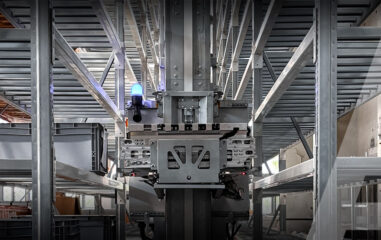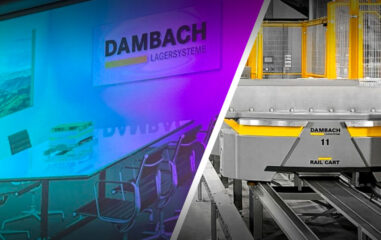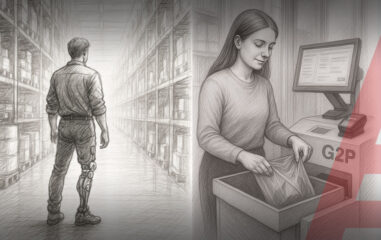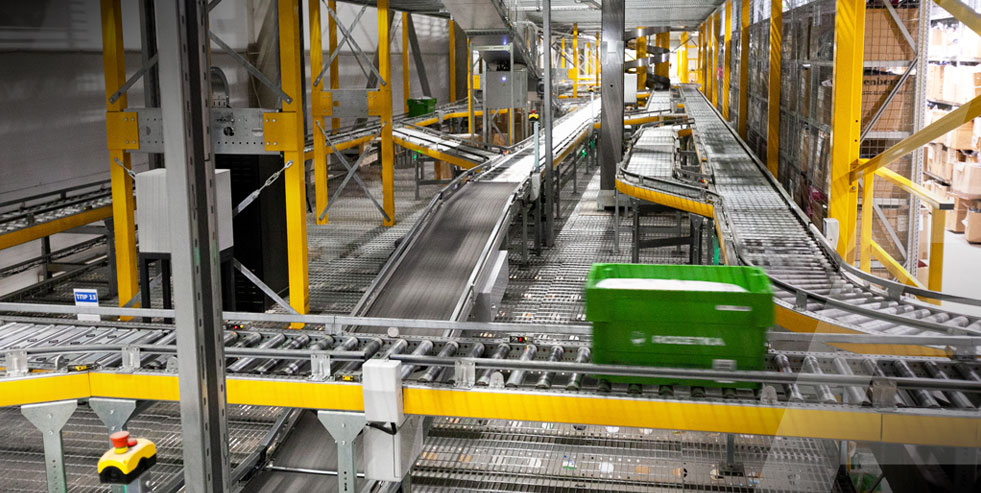4 tools for warehouse automation

Automated warehouses are an essential prerequisite for increasing the competitiveness of a distribution, logistics or production company.
Automation increases productivity by enabling the transport, collection and distribution of goods and the picking of customer orders in the shortest possible time.
Automation systems are easily configurable. They can be implemented in any warehouse, regardless of the specifics of its operations.
What difficulties can an automated warehouse solve?
The main task of automated warehouses and robot-assisted systems is support effective business processes, reduce work paths and reduce the error rate. This leads to the following:
- time savings in the execution of warehouse operations;
- increased precision and quality;
- error-free picking of multi-line customer orders.
The automated warehouse addresses shortcomings in the company’s management. The “intelligent” system allows you to:
- monitor the flow of goods;
- manage the facilities (transport, loading and unloading, sorting systems);
- identify the most suitable routes for the movement of goods in the warehouse;
- control the duration of storage of goods and stock levels;
- collection of statistical data;
- preparation of informative reports, etc.
All processes are coordinated by the computer. Automated warehouse control systems link strategic tasks with concrete processes. This increases the overall efficiency of management.
Developing a warehouse concept
Automation requires an individual approach. After all, each warehouse or storage facility has its own specific characteristics, even within the same industry. Efficiency and productivity depend on the right technology for the business and the selection of the right automation solution.
An automated warehouse is a complex system, a symbiosis of different types of systems: Transport, conveyor, loading and unloading, racking, robotic, information and sorting systems.
In order to build an automated warehouse, the first step is to optimise the most important work areas, i.e. the areas where a lot of personnel is used. These are the areas where the transport from incoming goods to the warehouse and from the warehouse to dispatch takes place, as well as the areas where the sorting process takes place. This can be done with the help of special equipment. Without the involvement of experts, it is almost impossible to implement this. After all, it requires a very wide range of knowledge and practical experience from the supplier.
KAPELOU has already carried out more than 590 projects of various sizes and is an expert in setting up automated warehouses. Business process optimisation and warehouse automation are part of this:
- advice and selection of efficient solutions, taking into account the special features and characteristics of the company;
- planning, production and installation of multifunctional systems;
- creation of software for warehouse automation;
- integration of the software product into the customer’s merchandise management system;
- commissioning work;
- implementation of the software and the warehouse management system in the company;
- technical training (including express training of employees and expert support).
How can an automated warehouse be designed? 4 effective solutions
This is not a simple process. It requires a comprehensive analysis of the applied warehouse technology, data on the specifics of the flow of goods and forecasts of the company’s development over a period of at least 5 years. The concept of the future warehouse must meet the client’s requirements in terms of performance and functionality, as well as the norms of current safety standards.
Creation of an automated warehouse system
An automated warehouse system includes various types of state-of-the-art equipment.
- Conveyor systems: Their task is to ensure that the goods are brought to the desired location in the warehouse. The operation of the system is controlled through the use of the WCS system. Depending on the design and purpose, there are conveyor belts (for connecting production areas and storage areas, for moving containers, small loads and soft-packed goods, for transporting at an angle or between storage levels), vertical conveyors for moving pallets and boxes between mezzanines, roller conveyors (with and without drive), spiral conveyors (for organising sorting systems and the intermediate storage of goods);
- Gravity racking systems: Depending on the purpose, a distinction is made between two types of systems: Shelving and pallet systems. Their special feature is that the levels consist of slightly inclined rollers and the load is moved by gravity. This racking system is a good choice for building an automated warehouse. The solution allows goods to be unloaded at least five times faster compared to conventional racking systems. Time intervals are shortened and the workload of warehouse employees is reduced. Gravity racking is suitable for the orderly storage of goods according to the LIFO and FIFO principles. In the first case, the goods that arrived last are dispatched. FIFO is used when storing products that have a short shelf life. The goods that arrive first in the warehouse are dispatched from there first;
- Mobile shelves: they are characterised by the possibility of moving parts on special rails to create a corridor that allows access to the desired product. The operator can open the area he needs for his work by means of a remote control. Thanks to the mobility of the system, up to 75% of the storage volume can be used;
- Automated warehouse operation requires the use of modern and convenient technologies: pick by light/put to light, machine reading, automatic determination of weight/size of goods and others. The use of such solutions can at least double the speed and increase the picking accuracy of multi-line customer orders up to 99.99%. For example, the machine vision system enables dynamic reading from any height (including damaged barcodes), checks the integrity of containers and packaging, detects the presence of a product and its colour, and prevents collisions of containers on the conveyor line. The paperless picking technology Pick by Light/Put to Light helps to speed up order processing, reduce errors to zero, ensure fast picking and thus optimise the company’s competitive advantage.
Automation is important for warehouses with high throughput and a wide range of items, or for warehouses that want to reduce their dependence on fluctuations in the labour market. This applies to warehouses in e-commerce, the automotive industry, pharmaceutical companies and distribution, manufacturers of car parts and other products, retailers, postal and courier services.
Get a free manager consultation and find an effective solution for the efficient operation of your warehouse. The future belongs to complete solutions!

Today, warehouse efficiency is measured in seconds, not hours. Modern warehouses are no longer just spaces packed with racks – they’re dynami...

On August 19-20, 2025, our engineering team completed training at Dambach Lagersysteme (Germany), a manufacturer of storage and retrieval equipment...

In recent years, the warehouse has evolved far beyond being just a place to store goods. It is now a dynamic, technology-driven environment –...
 Close
Close
 Back
Back


 Close
Close





